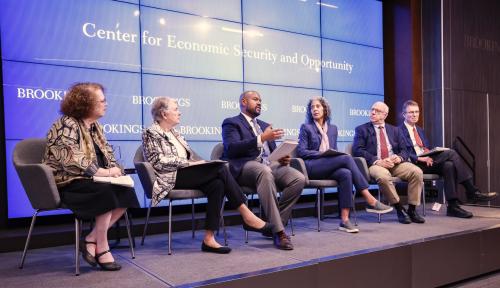Why do some people have lower active aspirations (as opposed to vague hopes) than others?
Four broad possible explanations:
- I Don’t Want It. A person might decide entirely autonomously that the accepted optimal path is simply not for them. (“You may think college is important, and I’ve thought hard about it, and could go. But I’d honestly rather work as a ranch hand for the rest of my life.”)
- It’s Beyond My Reach. Individuals might lower their aspirations—or fail to develop active aspirations—because of a mistaken belief that the goal is beyond their reach. (“I guess I don’t want it that much, since I know I’m not going to get it.”)
- It’s Not For People Like Me. Individuals may inherit or adopt values, preferences, and norms from others that place a lower weight on particular goals. (“I don’t want it, because I’ve inferred that it is not an appropriate goal for me.”)
- I Never Knew About It. A person might not have an active aspiration for a particular end simply because of ignorance of the object of the potential aspiration, or of a pathway towards it. (“I don’t want it because I don’t know about it.”)
Raising Active Aspirations
If a well-informed person has simply chosen, for their own good reasons, different—if “lower”—active aspirations, anybody with a liberal bone in their body should leave them alone. But in the other instances, anybody with a meritocratic bone in their body should be worried.
Can we do anything to raise active aspirations? It looks like it:
- The Upward Bound program, aimed at students with parents with low incomes or who did not go to college, boosted enrollment at four-year colleges for students starting with low educational expectations (i.e., expecting less than a bachelor’s degree) from 18% to 38%.
- Youngsters in the Big Brothers, Big Sisters scheme, matched to an adult mentor, skipped half as many days of school, felt more competent about schoolwork, and missed fewer classes.
- Information packets and fee waivers provided to high-achieving, low-income students via the Expanding College Opportunities project increased the number of college applications by these students by 19%.
We should not overstate the impact of this handful of interventions. Much deeper social trends are at work in the shaping of active aspirations. In some cases, an individual’s assessment that a goal is beyond their reach might be pretty accurate. In that case, people won’t raise their sights unless we improve their odds. Aspirations will not rise in the absence of real opportunities.
But nor should we assume that active aspirations are entirely beyond the reach of interventions. Fairly modest investments of time, energy, or money can increase active aspirations, with positive implications for upward mobility.
Alongside measures to close gaps in education, health, and parenting, policymakers ought to invest in complementary initiatives that address gaps in active aspirations.
Skills imbue people with the capacity to act. But they need a reason to act, too.



Commentary
Vague Hopes and Active Aspirations, Part 2
April 17, 2014